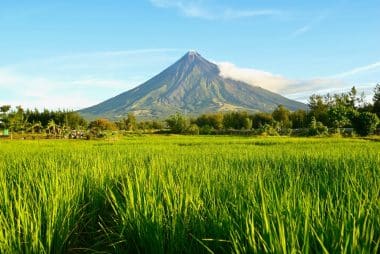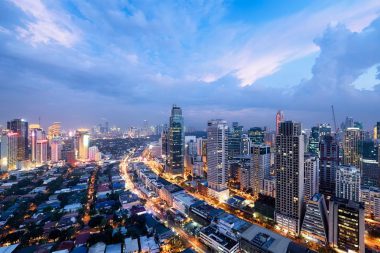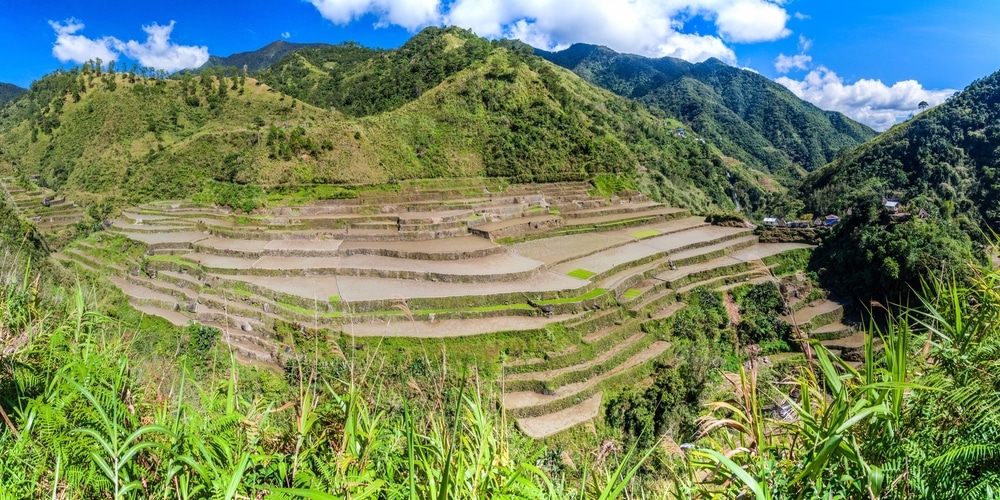Luzon is the largest island in the Philippines and a fascinating destination that delights with an impressive variety of natural beauty, cultural highlights and historical sites. From vibrant cities like Manila to idyllic mountain landscapes and pristine beaches, Luzon has something for everyone. This article will give you a comprehensive overview of the highlights, climate, how to get there, and the best things to do in Luzon.
Luzon at a glance
With an area of over 104,000 square kilometers, Luzon is the largest and most populous island in the Philippines. It is the economic and cultural center of the country and is home to the capital Manila and the historic city of Quezon City. Luzon impresses with a fascinating combination of urban flair, lush rainforests, majestic mountains and dreamlike coastlines.
The highlights of Luzon
1. Manila – The Vibrant Capital
Manila is the heart of the Philippines and offers an exciting mix of history and modernity. Visit the historic Intramuros district with its colonial buildings and the famous San Agustin Church, a UNESCO World Heritage Site. For shopping lovers, the Mall of Asia is a must, while Rizal Park invites you to take relaxing strolls.
2. The Rice Terraces of Banaue
The more than 2,000-year-old rice terraces of Banaue are often referred to as the “eighth wonder of the world”. These impressive landscapes were carved into the mountain slopes by the Ifugao indigenous people and are now a symbol of the cultural heritage of the Philippines.
3. Mayon Volcano

The perfectly shaped cone of Mayon Volcano is an impressive natural wonder. The active volcano is located in the Bicol region and is a popular destination for hikers and adventurers. The views from the summit are breathtaking, but the surrounding villages and countryside are also worth exploring.
4. Vigan – A Journey to the Colonial Era
The town of Vigan is another UNESCO World Heritage Site and is known for its well-preserved Spanish colonial architecture. Walk the cobblestone streets, visit historic houses, and enjoy traditional cuisine at one of the charming restaurants.
5. Hundred Islands National Park
The Hundred Islands National Park is a paradise for nature lovers. Here you can relax, snorkel or kayak on one of the over 100 islands. Each island has its own charm, and the turquoise waters are to die for.
The climate in Luzon
Luzon is located in the tropical climate zone, which is characterized by warm temperatures and high humidity. The best time to visit is from November to April, when the dry season prevails and temperatures are between 25 and 30 degrees Celsius. The rainy season lasts from May to October and often brings heavy rainfall, especially in the mountainous regions.
Weather in Luzon (averages):
| Month | Temperature (°C) | Precipitation (mm) |
|---|---|---|
| January | 25–30 | 20–40 |
| July | 27–32 | 150–300 |
Getting to Luzon

Getting to Luzon is easy as Manila is well connected to international airports worldwide via Ninoy Aquino International Airport (MNL). Direct flights from Europe, Asia and the USA make the island easily accessible. Within Luzon, there is a well-developed network of buses, trains, and domestic flights that will take you comfortably to the various destinations.
Activities and experiences
Hiking in the Cordillera Mountains
The Cordillera Mountains offer stunning hiking trails that take you through dense rainforests, past waterfalls, and traditional villages. The hike to the summit of Mount Pulag is particularly popular, from where you can experience a spectacular sunrise.
Snorkeling and diving
The coastal regions of Luzon are a dream for snorkeling and diving fans. The Batangas region in particular is known for its colorful coral reefs and rich marine life.
Culinary discoveries
Filipino cuisine in Luzon is a highlight for foodies. Be sure to try local specialties such as adobo (meat in a spicy soy sauce marinade), halo-halo (a refreshing dessert made with mixed fruits and ice cream), and fresh fish straight from the market.
Tips for your trip to Luzon
- Take out travel insurance: Good travel insurance is recommended, especially for outdoor activities and hikes.
- Local currency: The local currency is the Philippine peso (PHP). It is advisable to take enough cash with you, as ATMs are not available in rural areas.
- Respect the culture: Especially in traditional villages, it is important to respect the local culture and customs.
Result
Luzon is a diverse and fascinating destination that delights adventurers as well as culture and nature lovers. Whether you’re strolling the streets of Manila, admiring the stunning rice terraces of Banaue, or enjoying nature at the Mayon Volcano, Luzon offers you unforgettable experiences. It’s best to plan your trip during the dry season to enjoy the beauty of the island to the fullest. Start your Luzon adventure now and discover the magic of the largest island in the Philippines!


